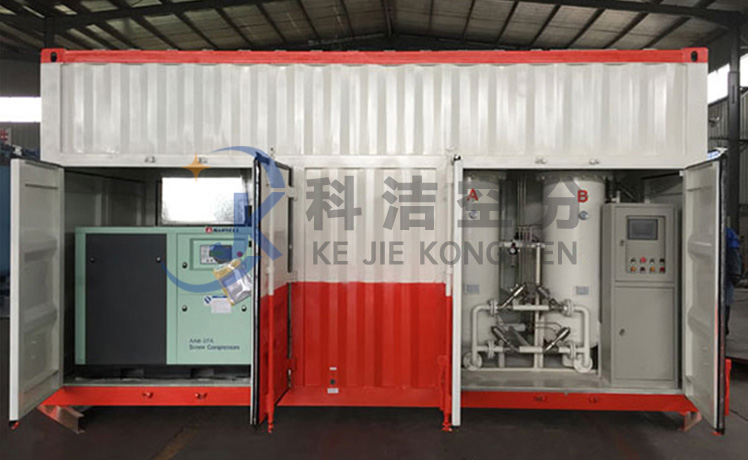The main components of air are nitrogen (78%) and oxygen (21%), so it can be said that air is an inexhaustible source for the preparation of nitrogen and oxygen. PSA oxygen plant. Nitrogen is mainly used for synthetic ammonia, metal heat treatment protective atmosphere, inert protective gas in chemical production (start-up and shutdown pipeline purging, nitrogen sealing of easily oxidized substances), grain storage, fruit preservation, electronic industry, etc. Oxygen is mainly used as oxidant in metallurgy, auxiliary gas, medical treatment, wastewater treatment, pressure swing adsorption nitrogen plant and chemical industry. How to cheaply separate air to produce oxygen and nitrogen is a long-term problem studied and solved by chemists.

Pure nitrogen cannot be extracted directly from nature, so air separation is the first choice. Air separation methods include low temperature method, pressure swing adsorption method and membrane separation method. With the rapid development of industry, nitrogen has been widely used in chemical industry, electronics, metallurgy, food, machinery and other fields. China's demand for nitrogen is growing at an annual rate of more than 8%. The chemistry of nitrogen is not vivid. It is very inert under ordinary conditions and is not easy to react with other substances. Therefore, nitrogen is widely used as maintenance Gas and sealing gas in metallurgy, electronics, chemical industry and other industries. Generally speaking, the purity of maintenance gas is 99.99%, and some require more than 99.998% high-purity nitrogen.
Liquid nitrogen generator is a convenient cold source, which is more and more widely used in semen storage in food industry, work and animal husbandry. In the production of synthetic ammonia in the fertilizer industry, the hydrogen nitrogen mixture in the synthetic ammonia feed gas is washed and refined with pure liquid nitrogen. The content of inert gas may be very low, and the content of carbon monoxide and oxygen shall not exceed 20ppm.

The membrane separation of air adopts the permeation principle, that is, the diffusion rates of oxygen and nitrogen in the nonporous polymer membrane are different. When oxygen and nitrogen are adsorbed on the surface of the polymer membrane, due to the concentration gradient on both sides of the membrane, the gas diffuses and passes through the polymer membrane, and then desorbs on the other side of the membrane. Because the volume of oxygen molecule is less than that of nitrogen molecule, the diffusion rate of oxygen in polymer membrane is greater than that of nitrogen molecule. In this way, when air enters one side of the membrane, oxygen enriched air can be obtained on the other side and nitrogen can be obtained on the same side.
Nitrogen and oxygen enriched air can be obtained continuously by separating air with membrane method. At present, the selectivity coefficient of polymer membrane for oxygen and nitrogen separation is only about 3.5, and the permeability coefficient is also very small. The nitrogen concentration of the separated product is 95 ~ 99%, and the oxygen concentration is only 30 ~ 40%. Membrane separation of air is generally carried out at room temperature, 0.1 ~ 0.5 × 106pa。
Post time: Jan-18-2022

